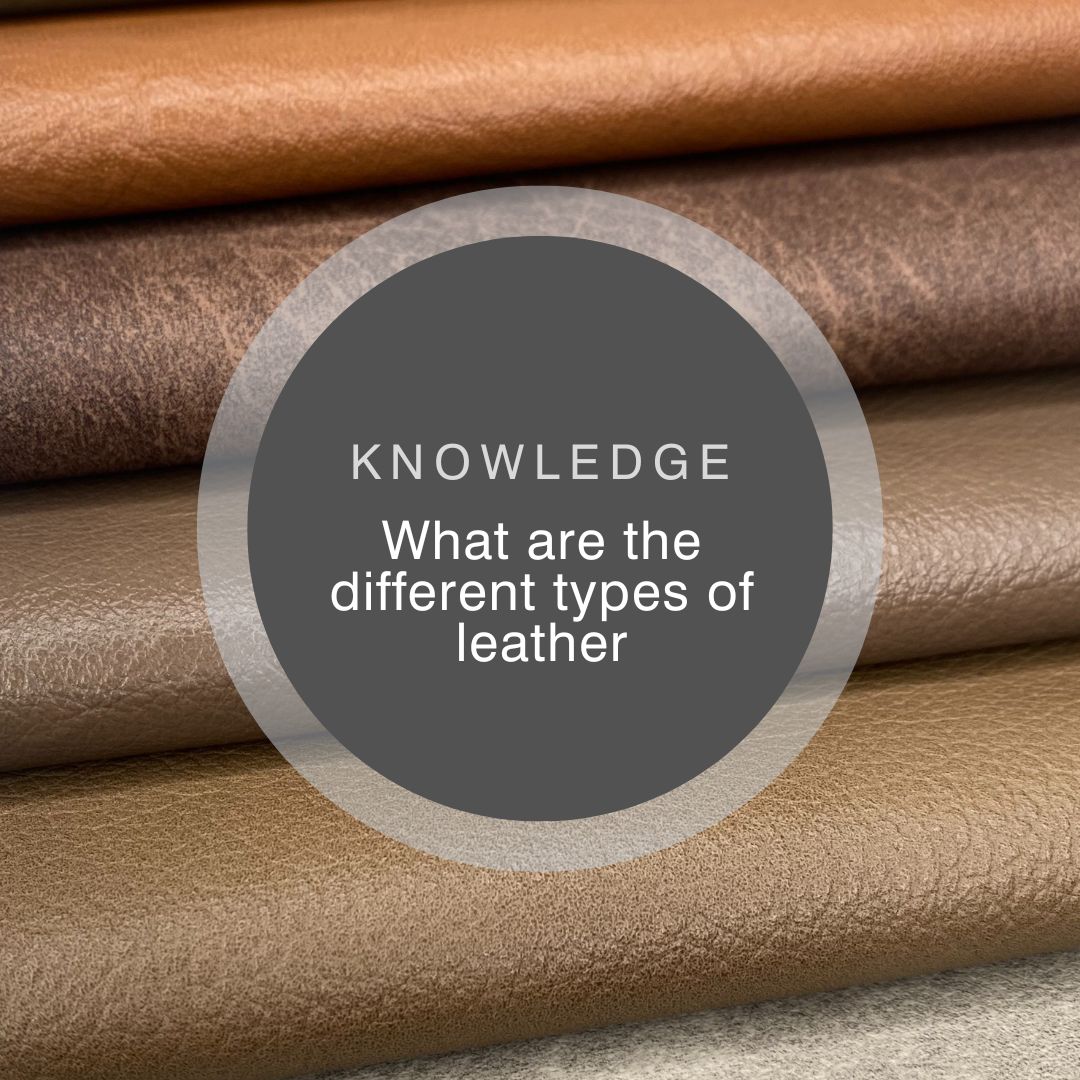22 December 2023
What are the different types of leather?

Are there different types of leather? In terms of texture, appearance, and intended uses, absolutely. Choosing the right kind of leather is important for several reasons – it can impact on quality, durability, aesthetics, sustainability, budget, and functionality.
From faux leather to full grain, we outline how to identify leather types, how they vary in terms of the above factors, and which applications they’re best suited for.
How many types of leather are there?
There are countless types of leather, especially when you take different tanning methods, finishes, and treatments into consideration. Here, we narrow it down into the main variations, and which type is best for different applications.
Full-grain leather
Taken from the top layer of the hide, full-grain leather benefits from minimal processing, which gives it a natural appearance. It’s incredibly durable and breathable, making it perfect for high-end furniture and accessories. Thanks to its original grain, the patina it develops is extraordinary – making it perfect for the earthy interior trends we’re seeing on the horizon for 2024.
Top-grain leather
For furniture that requires a more uniform appearance – such as for upholstering aviation or restaurant seating – top-grain leather is a top choice. To give it a consistent look and remove any imperfections without compromising on durability, it undergoes slight sanding or buffing.
Suede
Is suede a type of leather? Indeed, suede is taken from the inner split of the hide, which is what makes it so soft and velvety. This softness does make it slightly less resistant to wear than full-grain or top-grain leather, but it makes up for this in its uniquely luxury appeal for accessories and upholstery.
Split leather
For projects with a tighter budget, split leather is a versatile and affordable choice. Taken from the lower layers of the hide (after the top grain is separated), it doesn’t have the hardiness of full-grain, but it still works well for furniture and accessories.
Corrected-grain leather
Another leather that’s great for anyone seeking a polished finish (rather than a natural, more rustic look), corrected-grain leather is processed to remove imperfections. This makes it ideal for achieving harmony in furniture upholstery, for projects where consistency is key.
Faux leather
Also known as synthetic or artificial leather, faux leather is the man-made alternative to genuine leather, specially designed to look and feel like the real thing (hard or soft). From bright sunflower (perfect for school breakout spaces or healthcare seating) to deep conker (a sumptuous shade for rich residential interiors), our faux leather range has something for all kinds of projects.
Eco leather
With environmental impact a growing concern for many, eco leather can be used to describe leather derived from organic farming practices, recycled materials, or tanning processes that reduce environmental impact compared to traditional methods. Most commonly, eco leather can be used as an upholstery material to cover chairs, sofas, ottomans, and other seating alternatives. It can also be processed into panels or sheets, which can then be used to cover furniture parts such as the sides or backs of sofas. While many traditional tanneries can be energy-intensive, our small partner tannery boasts a ISO 14001 (environmental) certification.
What is the best type of leather for your project?
At Yarwood, the experts at our tanneries create beautiful, long-lasting leather from bi-product bovine hides. We already provide services for a range of applications, including the domestic, aviation, automotive and contract seating industries. To find the best-suited leather for your project, browse our full range or get in touch.

